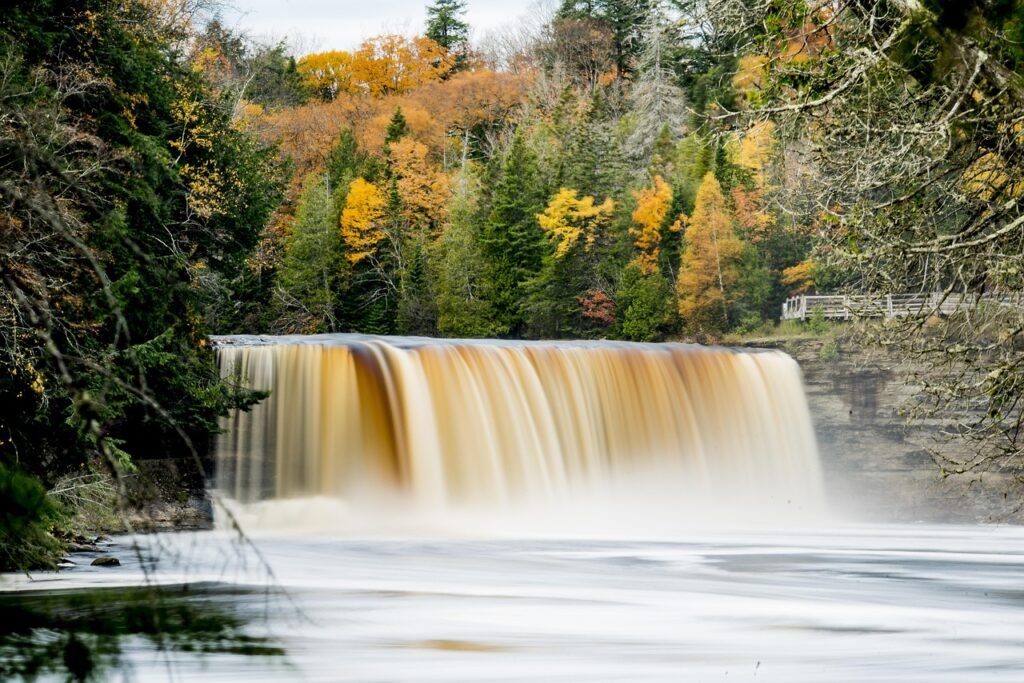You might think waterfalls are always crystal clear and unchanging, but nature has some spectacular surprises in store. Across America, certain waterfalls transform their appearance dramatically throughout the year, shifting from brilliant turquoise to deep chocolate brown, from emerald green to fiery orange. These color-changing phenomena aren’t magical tricks, but fascinating results of mineral deposits, seasonal algae growth, and unique light conditions that create some of the most breathtaking displays in the natural world.
The science behind these transformations involves complex interactions between geological processes, biological activity, and environmental factors that have been millions of years in the making. Understanding how these waterfalls change color opens a window into the incredible forces that shape our landscapes and reveals why timing your visit can mean the difference between seeing ordinary cascades and witnessing nature’s most spectacular light shows. So let’s get started on this journey through America’s most scientifically fascinating color-changing waterfalls.
Havasu Falls, Arizona – Monsoon Season’s Dramatic Transformation
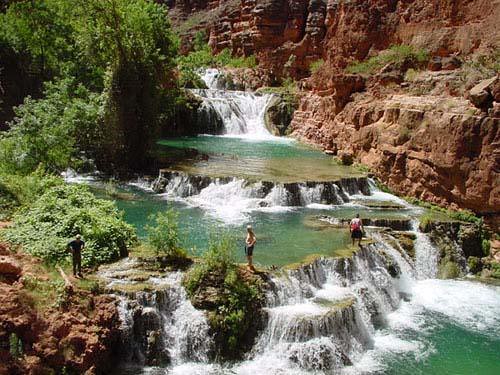
Havasu Falls presents one of the most dramatic seasonal color changes in America, thanks to its high concentration of calcium carbonate and magnesium that normally creates its famous turquoise-blue waters. During Arizona’s monsoon season, which officially runs from June 15 through September 30 with peak activity in July and August, the falls transform from their signature turquoise to chocolate brown when heavy rains roll through, as flash floods dislodge dirt and debris from creek banks. The mineral calcium carbonate in the water gives Havasu Creek its bright, vibrant blue color under normal conditions, with the white mineral deposits enhancing the effect whether settled on the bottom or suspended in the flow.
To see the classic turquoise color, visitors should plan their trips outside monsoon season during February, March, April, May, October, or November. The water temperature remains remarkably stable at around seventy degrees year-round, varying only slightly to the mid-fifties during winter months. The distinctive turquoise color and perpetual warm temperatures result from Havasu Springs feeding the creek, with calcium carbonate being responsible for the unique hue.
Niagara Falls, New York – The Green Giant’s Mineral Display
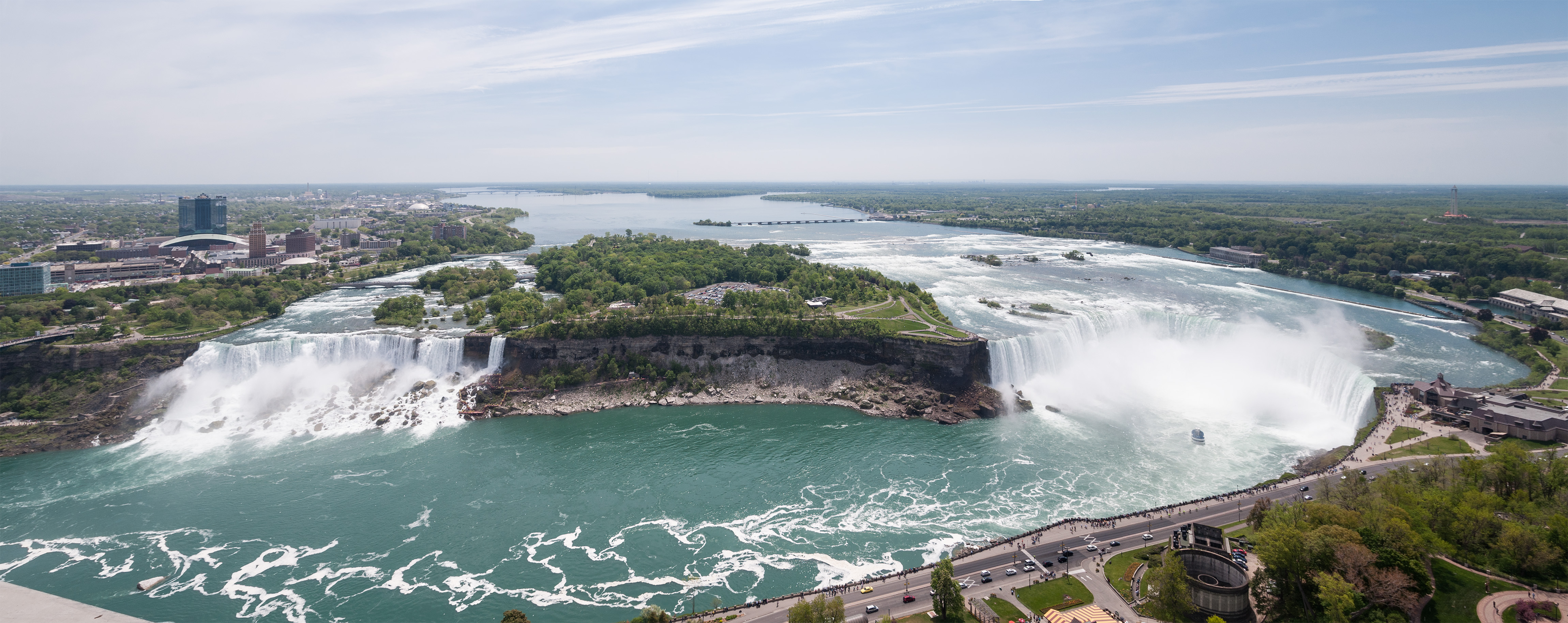
The startling green color of Niagara Falls serves as a visible tribute to water’s erosive power, with an estimated sixty tons of dissolved minerals swept over the falls every minute. This massive waterfall’s color changes subtly throughout the seasons as varying amounts of dissolved limestone, shale, and sandstone particles affect the water’s appearance. The erosive forces at work include frost action from spray, dissolving effects of the spray itself, and abrasion by fallen limestone boulders grinding against softer shales.
The green hue intensifies during spring snowmelt when increased water volume carries higher concentrations of dissolved minerals from the surrounding bedrock. The appearance can shift to more white coloration during periods of high flow, as rapidly moving water becomes saturated with tiny air bubbles. Winter conditions create the most dramatic visual changes, when freezing temperatures can alter both the water’s clarity and the way light interacts with the massive volume of cascading water.
Tahquamenon Falls, Michigan – The Root Beer River
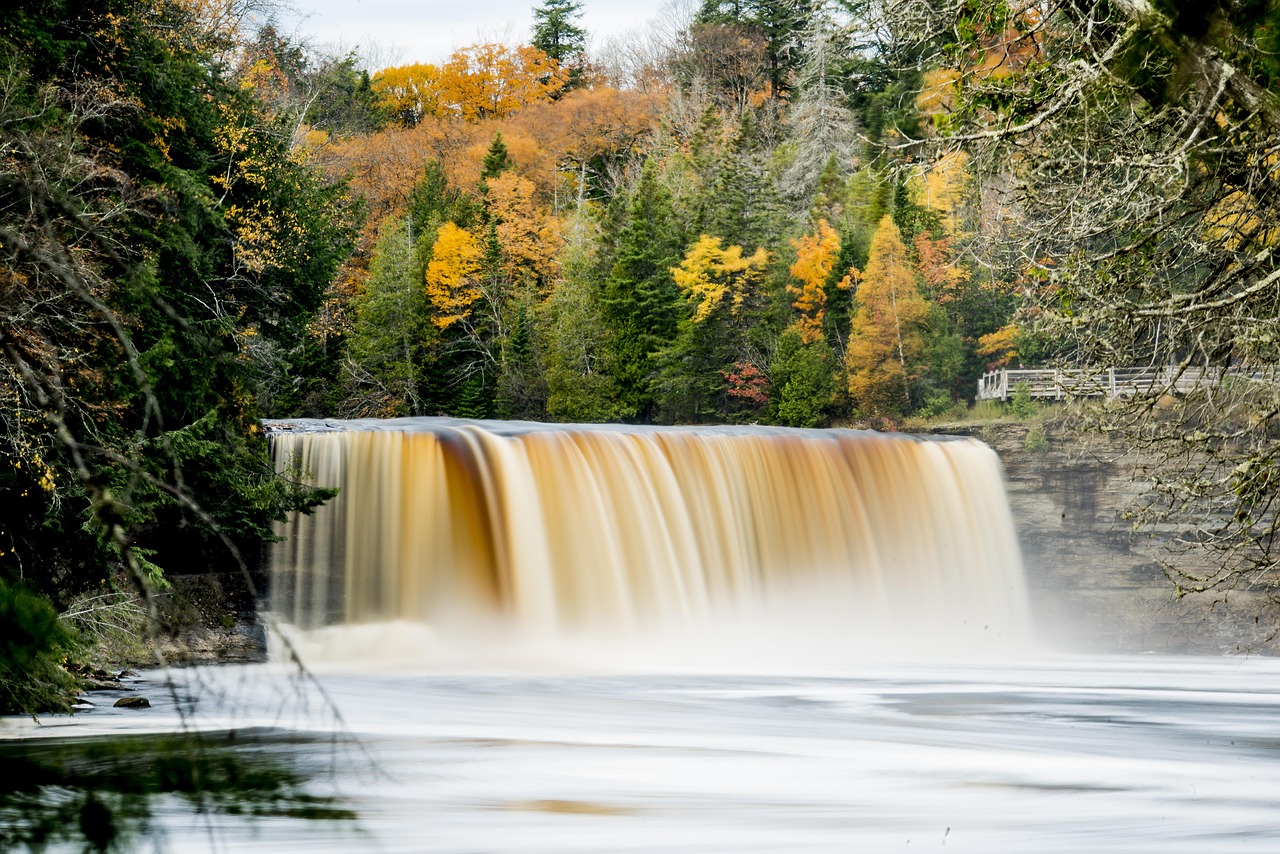
Tahquamenon Falls in Michigan’s Upper Peninsula displays a unique amber-brown coloration that varies in intensity throughout the seasons. This distinctive color comes from tannins leached from cedar, hemlock, and other vegetation in the surrounding swamplands upstream. As one of the signature waterfalls of the Upper Peninsula, Tahquamenon Falls State Park encompasses close to fifty thousand acres stretching over thirteen miles, featuring both Upper Falls and Lower Falls.
The brown coloration results from biological processes, particularly organic decay in the upstream swamps and wetlands. During spring snowmelt and heavy rainfall periods, the concentration of these organic compounds increases dramatically, creating deeper amber tones. The falls maintain their signature tangerine coloration even during peak tourist seasons, and as one of the largest waterfall systems east of the Mississippi River, they continue to attract visitors despite seasonal crowd variations. Fall season brings the most intense colors as decomposing leaves add to the natural tannin concentration.
Spray Falls, Michigan – Autumn’s Mineral Canvas
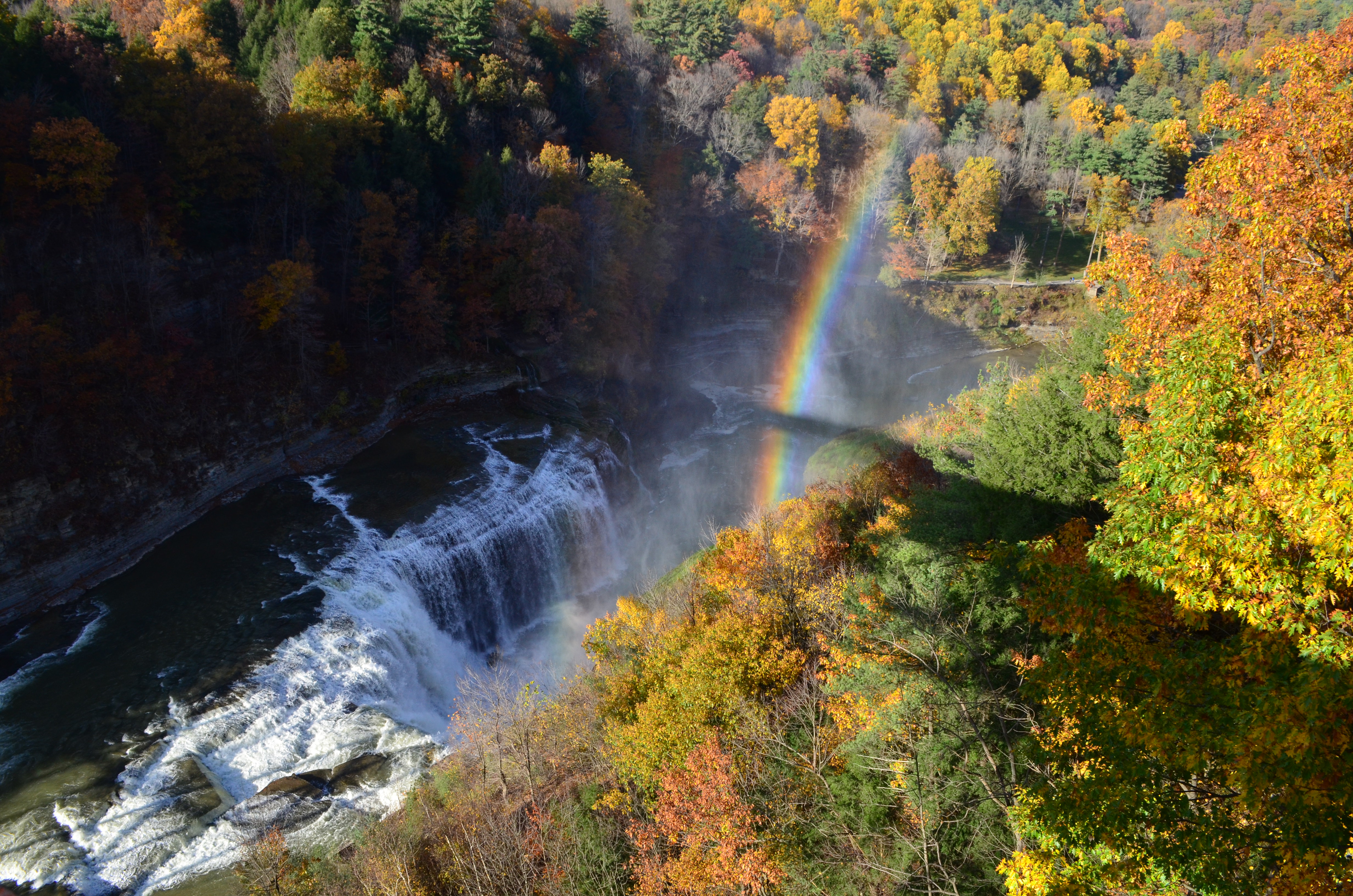
Spray Falls creates a spectacular seventy-foot plunge directly into Lake Superior, requiring a well-earned five-mile roundtrip hike from Little Beaver Lake Campground to witness its majesty. During autumn viewing seasons, the falls appear against mineral-painted cliffs and terracotta-colored trees that glow orange above the turquoise waters of Lake Superior. The waterfall’s appearance changes dramatically with seasonal lighting conditions and the mineral content of water flowing from the Pictured Rocks cliffs.
Spray Falls can be viewed from sunset cruises that pass iconic landmarks including Grand Island East Channel Lighthouse, Miners Castle, and Chapel Rock. The mineral deposits in the surrounding sandstone cliffs contribute trace amounts of iron and other compounds that can subtly alter the water’s appearance depending on seasonal water levels and flow patterns. Those seeking different perspectives can view the falls from the North Country Scenic Trail, with hiking options ranging from eight to nearly ten miles roundtrip depending on the chosen trailhead.
South Fork Mineral Creek Falls, Colorado – The Rainbow Cascade
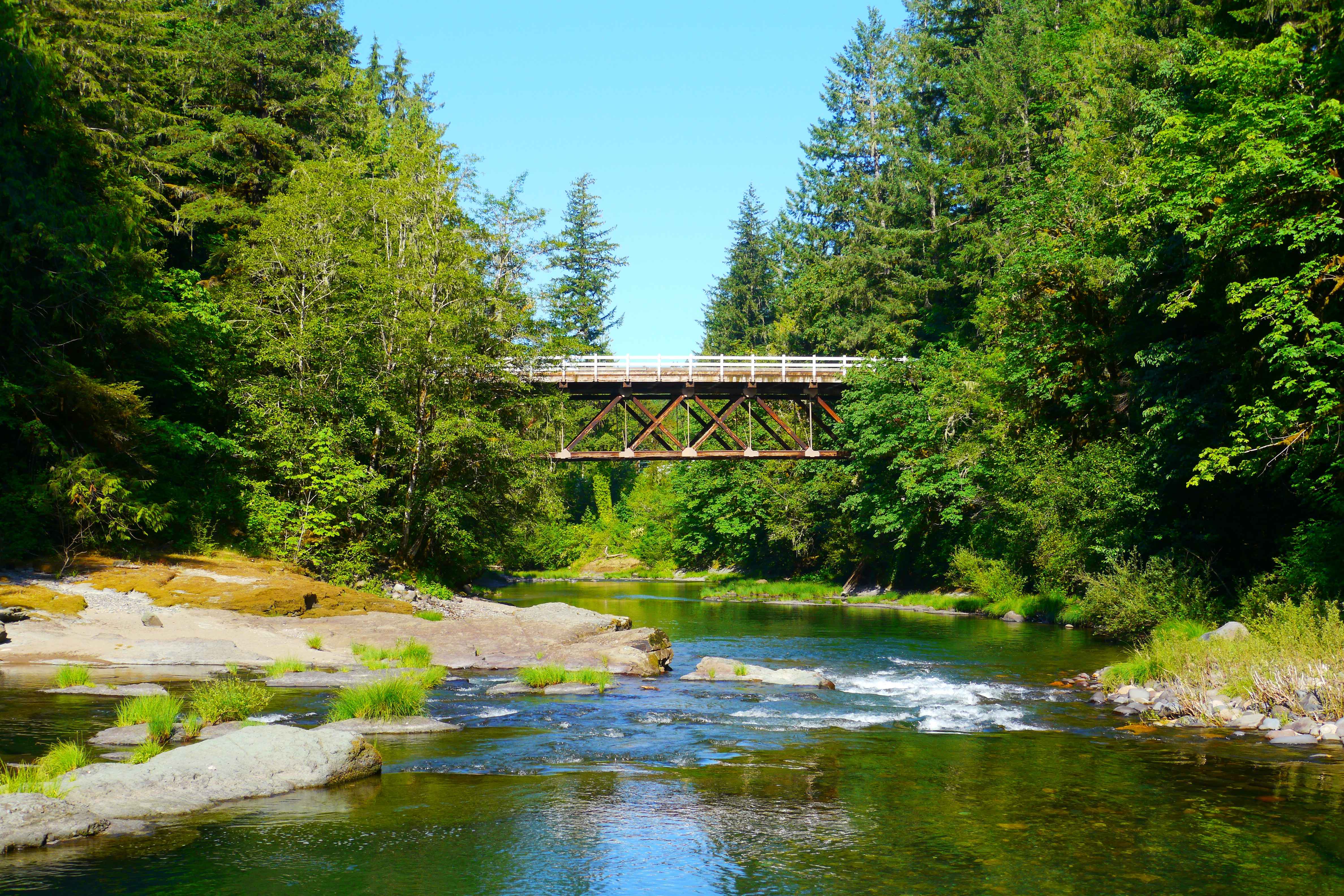
South Fork Mineral Creek Falls displays as a colorful eighty to one hundred foot two-tiered waterfall, with each tier dropping about forty to fifty feet into a colorful plunge pool that becomes especially vibrant when sunlight strikes its crystal clear waters. The surrounding cliffs contain traces of purple and red minerals that create striking color contrasts with the falling water. This high-altitude waterfall in Colorado’s San Juan National Forest showcases mineral-rich water that changes appearance throughout the seasons.
The falls derive their name from the mineral deposits found throughout the drainage area, which contribute dissolved compounds that can alter water coloration based on seasonal flow patterns and temperature changes. The water remains painfully cold year-round due to its snow-fed source. Spring runoff brings the highest mineral concentrations as snowmelt dissolves accumulated mineral deposits from winter, while late summer reveals the clearest water conditions when flow levels stabilize and suspended particles have had time to settle.
Mineral Springs Falls, New York – The Therapeutic Waters
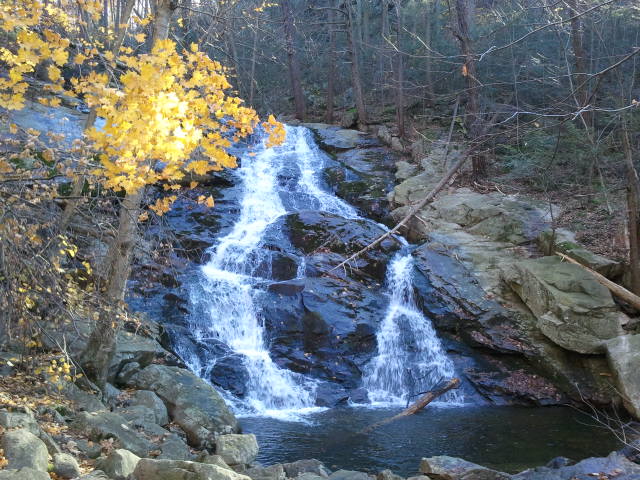
Mineral Spring Brook features one easily accessible waterfall along its perennial flow, with springs that were historically thought to be therapeutic and used for bathing, attracting tourism from nearby Cornwall-on-the-Hudson. The area contains magnetite mineral deposits that create unique conditions affecting both compass function and water chemistry. This sixty-foot cascade demonstrates how mineral-rich springs can create subtle color variations throughout the seasons.
The therapeutic springs that feed this waterfall contain dissolved minerals that have been concentrated through underground geological processes. As one of the few perennial streams in Black Rock Forest, the waterfall maintains consistent flow while seasonal changes in mineral concentration create subtle variations in water appearance. Winter conditions can intensify mineral concentrations as reduced flow allows for greater interaction between water and surrounding bedrock, while spring dilution from increased precipitation creates clearer conditions.
Little Colorado River Falls, Arizona – The Blue Oasis
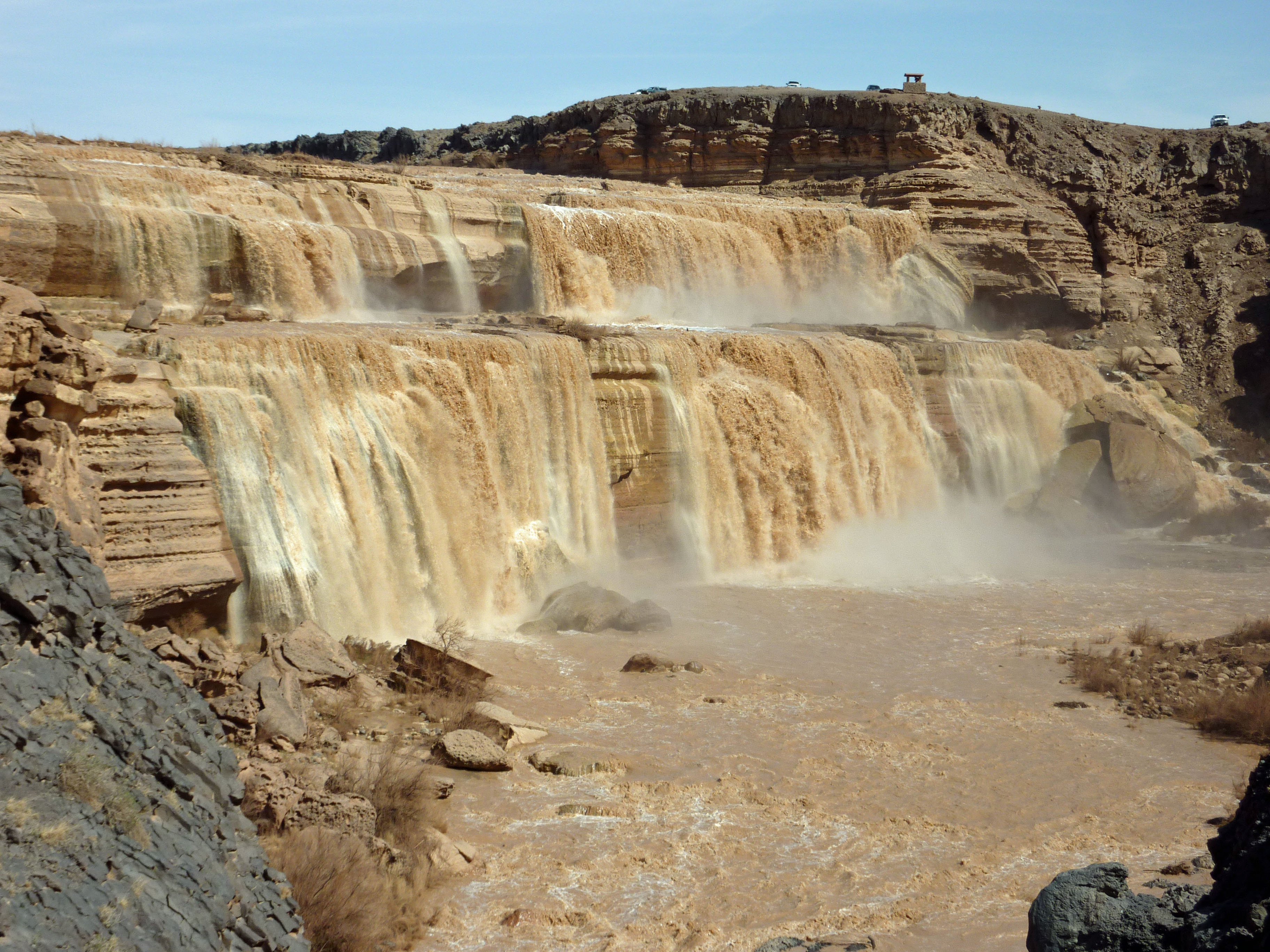
The Little Colorado River contains heavy concentrations of calcium carbonate minerals that create bright, vibrant blue coloration, with sunlight absorption patterns where red, orange, yellow, and green wavelengths are completely absorbed while blue wavelengths scatter, leaving only blue light reflecting back to observers’ eyes. Calcium carbonate deposits are responsible for much rock formation throughout the canyon area, with white mineral deposits enhancing the water’s blue appearance whether settled on the bottom or kicked up in the flow.
This phenomenon mirrors bright blue waters next to white sandy beaches worldwide, operating on the same light scattering principle but using white calcium carbonate instead of sand. Similar travertine deposits occur around hot springs with elevated calcium carbonate levels, commonly found throughout Yellowstone National Park, where USGS uses these mineral samples to date geologic and glacial activity. The blue intensity varies seasonally with flow rates and mineral suspension levels in the water.
Pocket Branch Falls, Georgia – The Cold-Water Tufa Builder
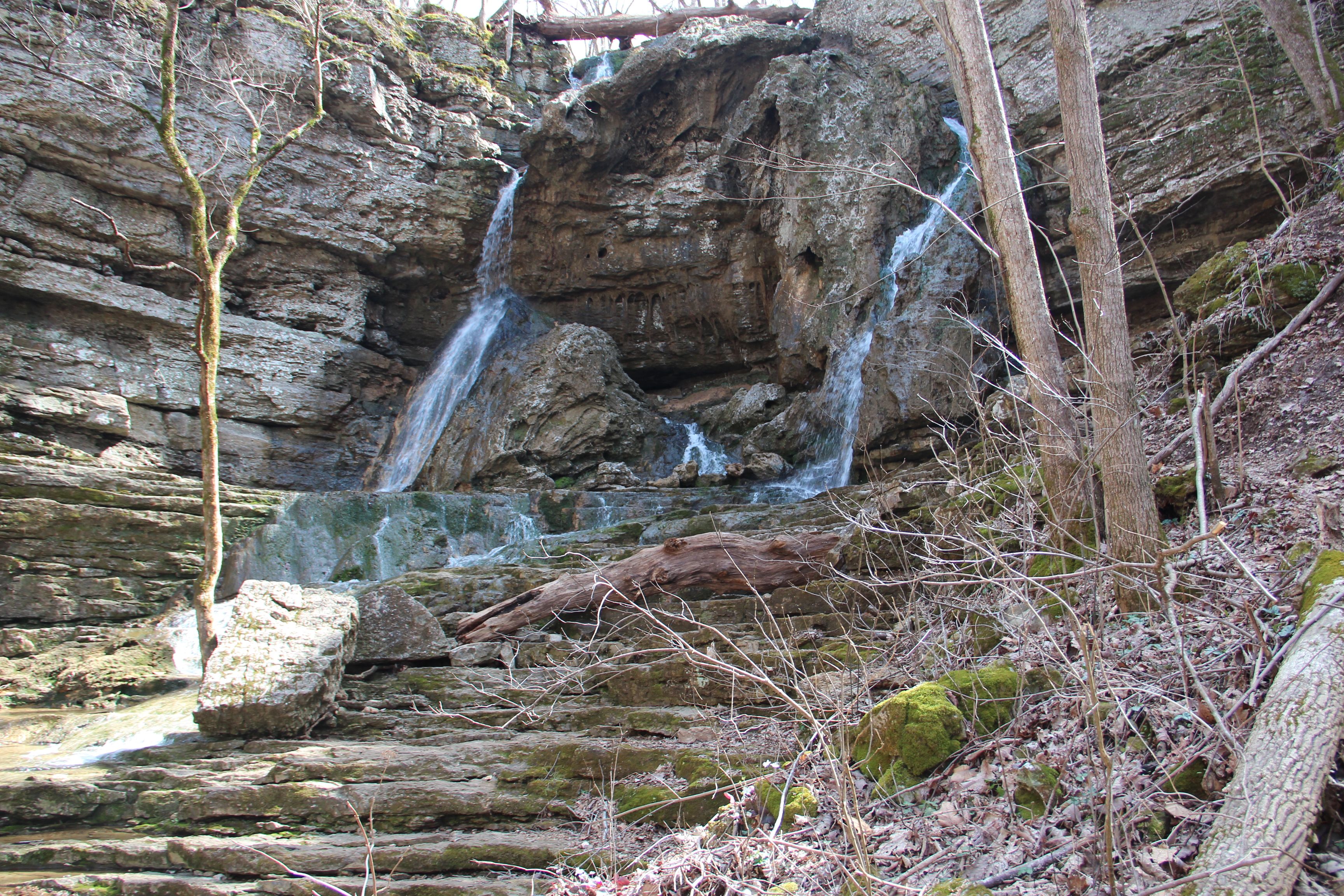
Pocket Branch in Walker County features mineral-laden waters that form tufa or calcite rock formations similar to Yellowstone’s terraced hot springs, but these are rare cold-water variety formations. The mineral buildup creates rippled folds with a distinctive drapery-like appearance. This constructive waterfall continues building mineral deposits rather than eroding away like most waterfalls.
Tufa, a porous variety of travertine, commonly forms near waterfalls and has been reported in multiple counties including Riley, Wabaunsee, Geary, Meade, and Butler counties. The cold-water mineral deposition process creates unique seasonal color variations as different minerals precipitate out of solution during temperature changes. Winter conditions can slow mineral deposition while increasing dissolved mineral concentrations, creating clearer but more mineral-rich water that may appear slightly different in color intensity.
High Falls, Georgia – The Fall Line Spectacle
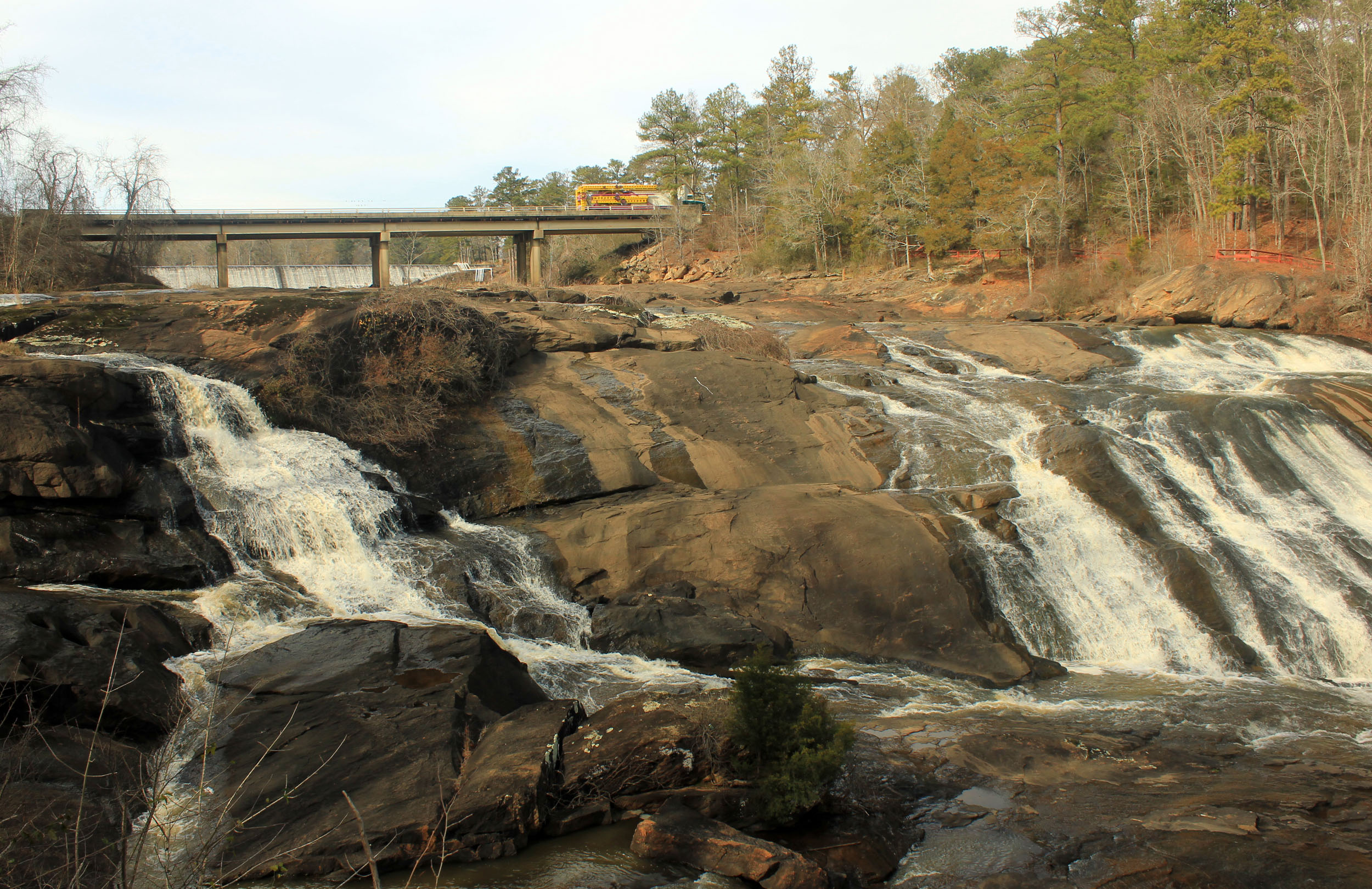
High Falls at High Falls State Park near Jackson in Monroe County represents the most notable waterfall in central Georgia, located at the site of a once-prosperous mill town powered by the Towaliga River’s falling waters. Stream levels fluctuate widely throughout seasons, with waterfalls serving as obvious indicators of rainfall abundance or scarcity, as demonstrated during the severe drought of 1999-2000 when stream levels dropped by two-thirds in many cases.
The falls occur along Georgia’s fall line running from Columbus to Augusta, marking the geologic boundary between hard crystalline rocks of the Piedmont to the north and softer sedimentary rocks of the Upper Coastal Plain to the south, with erosion creating steep gradients and waterfalls. Seasonal patterns show winter and spring as generally the wettest periods while fall remains the driest. These flow variations dramatically affect the waterfall’s appearance and the concentration of dissolved minerals from different rock layers.
Blood Falls, Antarctica – The Iron-Rich Mystery
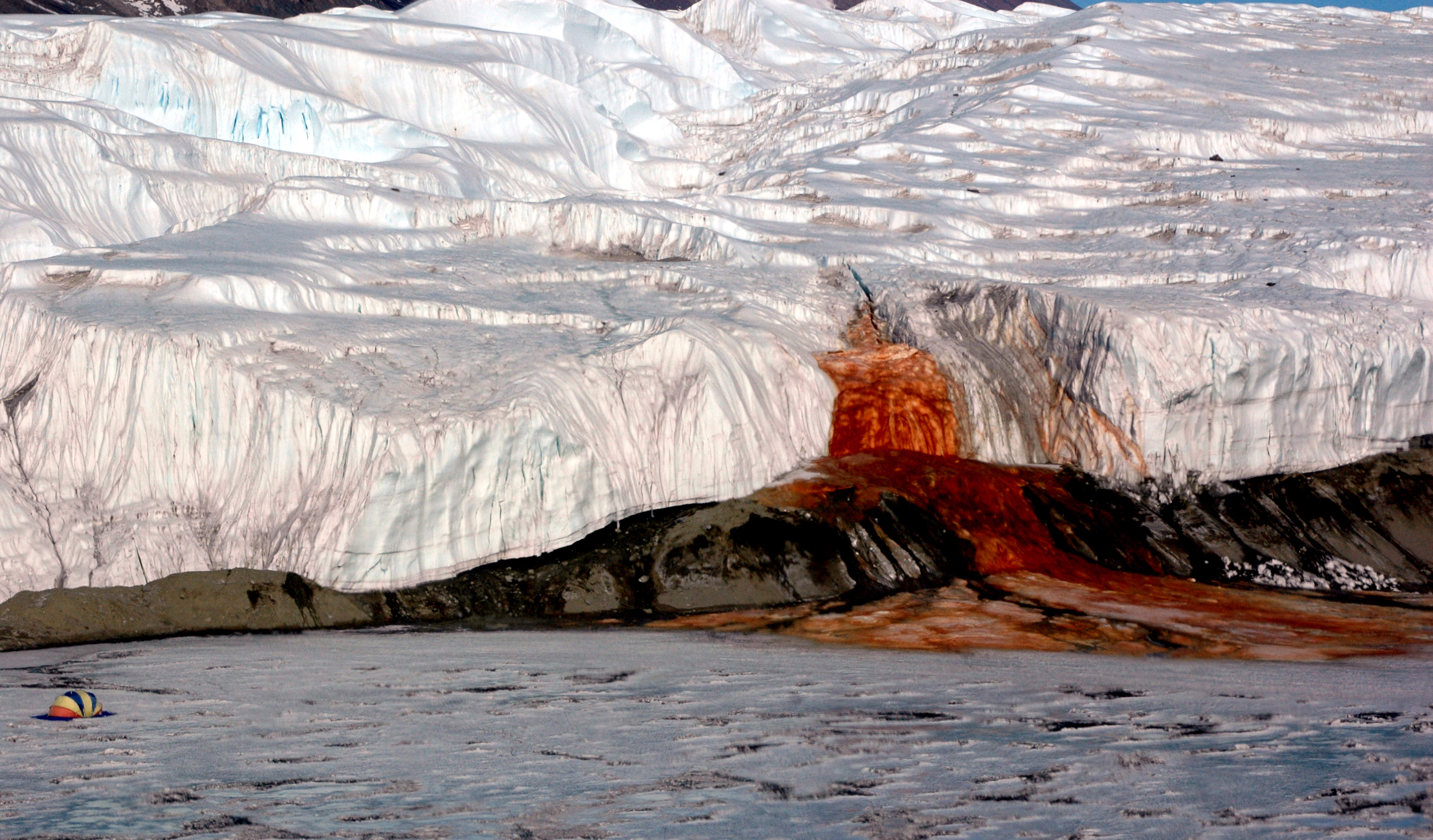
Blood Falls in Antarctica appears as a gruesome sight but contains no actual blood, with scientists initially thinking the bright red color might be caused by algae before discovering the true cause is salt water containing so much iron-oxide that it displays a red, rusty color. This unique waterfall demonstrates how extreme mineral concentrations can create dramatic coloration that appears to change intensity based on flow rates and seasonal conditions.
The iron-rich brine emerges from beneath Taylor Glacier, carrying dissolved minerals that have been concentrated over potentially millions of years in an underground reservoir. The red intensity varies with flow rates and the degree of oxidation occurring as the iron-rich water contacts oxygen in the atmosphere. While technically not in the United States, this falls serves as an extreme example of how iron compounds can dramatically alter waterfall coloration through natural mineral processes.
Munising Falls, Michigan – The Sandstone Filter

Munising Falls drops fifty feet over a sandstone cliff, accessible via an paved eight-hundred-foot trail through a shaded canyon along Munising Creek, with two sets of stairs leading to viewing platforms. The sandstone bedrock acts as a natural filter system that affects water chemistry and appearance throughout the seasons. Nearby Memorial Falls and Tannery Falls provide additional examples of how different geological formations influence waterfall characteristics.
The Pictured Rocks region’s sandstone formations contribute iron and other minerals that can subtly alter water coloration based on seasonal flow patterns and weathering rates. Spring snowmelt increases flow volume and mineral dissolution, while summer’s lower flows allow for different interactions between water and bedrock. The downtown Munising area serves as a base for exploring multiple waterfalls, each with its own unique geological and seasonal characteristics. Fall conditions often provide the clearest water as reduced algae growth and stable temperatures minimize biological color influences.
Ribbon Falls, Grand Canyon – The Desert Oasis Colors
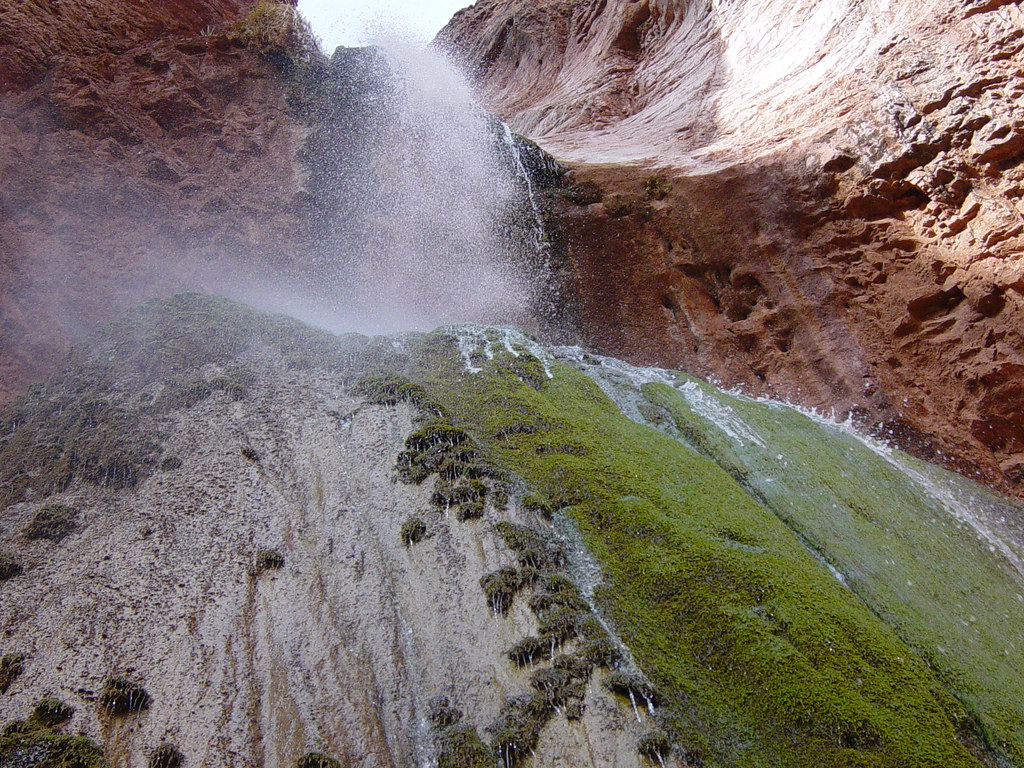
Ribbon Falls becomes accessible during winter months when Phantom Ranch reservations are often available last-minute and Bright Angel Campground permits are easier to secure. Spring provides excellent conditions for hiking to Ribbon Falls, along with other Grand Canyon waterfalls like those in Elves Chasm. This waterfall demonstrates how desert environments create unique mineral concentrations that vary seasonally.
Spring conditions coincide with snowmelt that often ensures Clear Creek and Cheyava Falls will be flowing, providing optimal backpacking conditions. The mineral composition of water feeding Ribbon Falls changes throughout the seasons as different weather patterns affect dissolution rates of surrounding limestone and sandstone formations. Access varies by season, with South Rim trips being best accessed from lodging in Tusayan, Arizona for easy morning trailhead access. Winter mineral concentrations often reach their highest levels as reduced precipitation allows for maximum interaction between groundwater and surrounding rock formations.
These twelve waterfalls showcase the incredible diversity of color-changing phenomena that occur across American landscapes. From the dramatic monsoon transformations of Havasu Falls to the iron-rich mysteries of remote cascades, each location demonstrates how geological processes, seasonal weather patterns, and biological activity combine to create nature’s most spectacular displays. Understanding these scientific principles enhances not only our appreciation for these natural wonders but also helps us time our visits to witness these phenomena at their most dramatic moments.
What do you think about these amazing color-changing waterfalls? Have you witnessed any of these transformations firsthand? Tell us in the comments about your own experiences with these natural spectacles.

